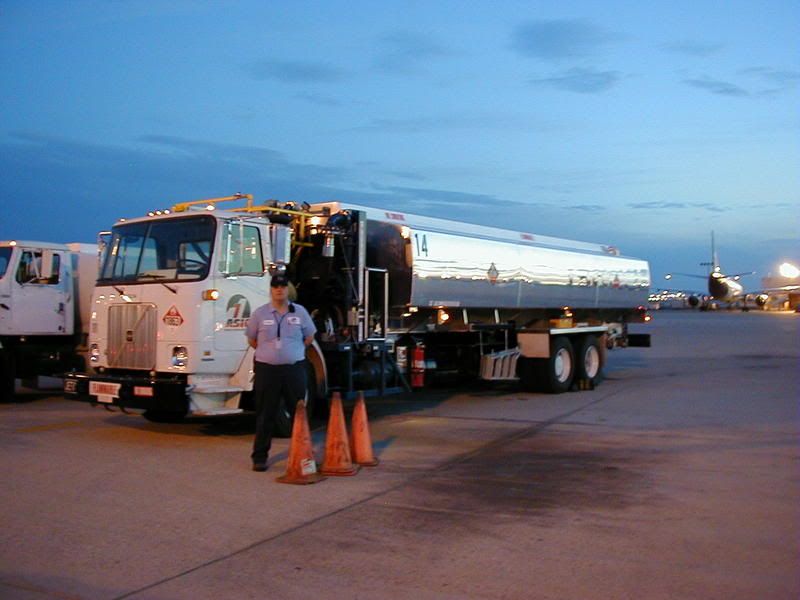Whats your top three favourite Aircraft of all time?
Moderators: Guru's, The Ministry
- Tom Everitt AFG
- Victor

- Posts: 222
- Joined: 26 Jun 2004, 10:10
- Location: Farnborough
- Contact:
erm... Chris, may I mentionChris Trott wrote:2) Vought F4U Corsair - first aircraft to exceed 400mph in level flight, beautiful design that is pure simplicity in execution.
3) McDonnell Douglas F-15 Eagle - first aircraft with a thrust-to-weight ration of greater than 1:1, first true air superiority fighter, and the progenetor of the awsome F-15E Strike Eagle, the best precision strike fighter in the world.
- Supermarine S6B, ratified World Air Speed Record, 407 mph, in 1931!!!!
and
- Hawker P1127, T/W ratio greater than 1:1, 1960!!!. If your definition is a full-service fighter - HS Harrier Mk1, 1968.
I guess my personal favourites, for various reasons:
1. Supermarine Spitfire - the Mk VIII if pushed to choose
2. Blackburn 1912 Type D - the Shuttleworth aeroplane
3. Another Blackburn - the Beverley.
Cheers,
Kevin
This really is a tough question that I could easily spend a good deal of time on, routing though various reference books. But as I don’t have access to those right now my snap decision is:
Vulcan
TSR2
Mosquito (roll on the 25th Aug so I can finally get my hands on a decent one for Flight Sim!!!)
Alex
Vulcan
TSR2
Mosquito (roll on the 25th Aug so I can finally get my hands on a decent one for Flight Sim!!!)
Alex

- Chris Trott
- Vintage Pair

- Posts: 2591
- Joined: 26 Jun 2004, 05:16
- Location: Houston, Texas, USA
- Contact:
Sorry, meant FIGHTER. Any previous excession of 400 MPH was by experimental aircraft.Kevin wrote: - Supermarine S6B, ratified World Air Speed Record, 407 mph, in 1931!!!!
You're right, at un-useful weights, it does. However, when groups like Jane's looks at it, they give it a 0.9:1 ratio because they base it off combat weight, not off a un-useful weight were the aircraft is combat ineffective due to not having enough fuel onboard to be able to do anything. At similar states to which the Harrier can claim 1:1, so can the F-16, F/A-18, and F-14. However, again, none can get anything done with it, so it's not a "practical" 1:1 thrust-to-weight ratio.- Hawker P1127, T/W ratio greater than 1:1, 1960!!!. If your definition is a full-service fighter - HS Harrier Mk1, 1968.
I went here at for the specs on the GR.1 - http://en.wikipedia.org/wiki/Hawker-Siddeley_Harrier
Per this, it's "loaded weight" is 17,260 pounds, a mere 5070 pounds over the empty weight of 12,190 pounds. The aircraft's internal fuel capacity is 5060 pounds. Thus, it's "loaded weight" cannot be it's combat weight unless they're using a severely restricted fuel loading. If you reduce fuel by 2000 pounds (nearly half the internal fuel capacity) so you can load missiles and gun ammunition, you have a practically useless aircraft as the fuel onboard gives it about an hour endurance. Not much for taking off, intercepting, fighting, and then returning to the ship. Or you sling a pair of 500 pound bombs onto it and hit maybe 2 tanks and add another thousand pounds of fuel and make another half hour and hit a target ~100 miles away and then come home.
If we go over to the F-15A (Warbird Tech's book is my source) we see that the combat weight is 41,000 pounds, 14,500 pounds over the empty weight of 26,500 pounds. Internal fuel capacity is 11,200 pounds, thus it leaves 3,300 pounds for expendibles. The afterburning thrust from its twin F100-PW-100 engines is 47,660 pounds. It has a practical 1:1 thrust-to-weight ratio at combat weight. Thus, an F-15A can take off at combat weight, climb vertically while gaining airspeed, and then level off at its desired altitude (usually around 30,000 feet), thus allowing the aircraft to quickly counter any incoming air threats, but also giving it nearly 2.5 hours of endurance.













